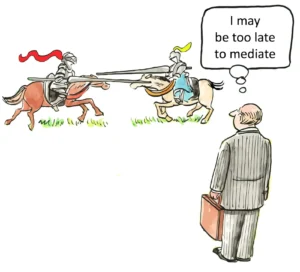Restraining Orders: How to File and Enforce Legally
Restraining orders serve as crucial legal tools for protecting individuals from harassment, abuse, or threats. Understanding how to properly file and enforce these orders is essential for those seeking protection and for legal professionals advising clients. This comprehensive guide examines the process of obtaining a restraining order, the various types available, and the legal mechanisms for enforcement.
A restraining order, also known as a protective order or order of protection, is a court-issued document that prohibits an individual from engaging in certain behaviors or actions towards another person. These orders are commonly used in cases of domestic violence, stalking, harassment, or other situations where a person fears for their safety. The legal framework surrounding restraining orders varies by jurisdiction, but the fundamental purpose remains consistent: to provide legal protection for individuals at risk of harm.
The process of filing a restraining order typically begins with the petitioner, the person seeking protection, submitting an application to the appropriate court. In most jurisdictions, this can be done at the local courthouse or through the district attorney’s office. The petitioner must provide detailed information about the alleged abuse or threats, including specific incidents, dates, and any supporting evidence. It is crucial for petitioners to be as thorough and accurate as possible when completing this application, as the information provided will form the basis for the judge’s decision.
Upon receiving the application, a judge will review the information provided to determine whether to issue a temporary restraining order. This initial order is often granted ex parte, meaning without the presence or input of the person against whom the order is sought (the respondent). The purpose of a temporary order is to provide immediate protection while awaiting a full hearing. If granted, the temporary order typically remains in effect for a short period, usually 10 to 14 days, until a hearing can be scheduled.
The next step in the process is the service of the restraining order. The respondent must be officially notified of the order and the upcoming hearing date. This service is typically carried out by law enforcement officers or a process server. Proper service is crucial, as it ensures that the respondent is aware of the legal proceedings and the restrictions placed upon them. Failure to properly serve the order can result in delays or complications in the enforcement process.
At the full hearing, both the petitioner and the respondent have the opportunity to present their case before a judge. This hearing is crucial, as it determines whether a permanent or long-term restraining order will be issued. The petitioner must provide evidence to support their claim of the need for protection, which may include testimony, police reports, medical records, or witness statements. The respondent has the right to contest the order and present their own evidence or arguments. Based on the evidence presented, the judge will decide whether to issue a permanent restraining order and, if so, its specific terms and duration.
The types of restraining orders available can vary depending on the nature of the relationship between the parties and the specific circumstances of the case. Domestic violence restraining orders are typically issued in cases involving family members, intimate partners, or household members. These orders often include provisions for child custody, support, and property use in addition to protection from abuse. Civil harassment restraining orders are used in cases involving non-family members, such as neighbors, coworkers, or acquaintances. Some jurisdictions also offer specialized orders, such as workplace violence restraining orders or elder abuse restraining orders, to address specific situations.
The terms of a restraining order can be comprehensive and may include various restrictions on the respondent’s behavior. Common provisions include prohibitions on contacting the protected person, coming within a certain distance of their home or workplace, and possessing firearms. In cases involving domestic violence, the order may also address issues such as child custody, visitation, and financial support. It is crucial for both parties to understand the specific terms of the order, as violations can result in serious legal consequences.
Enforcement of restraining orders is a critical aspect of their effectiveness. Law enforcement agencies play a key role in this process. When a restraining order is violated, the protected person should immediately contact the police. Officers have the authority to arrest the violator, even if they did not witness the violation firsthand. It is important for the protected person to keep a copy of the restraining order with them at all times and to provide copies to their employer, school, or other relevant parties.
Violations of restraining orders are taken seriously by the legal system and can result in criminal charges. The specific penalties for violation vary by jurisdiction but often include fines, probation, or imprisonment. In some cases, repeated violations or particularly egregious acts can lead to felony charges. The criminal justice system’s response to violations serves as a deterrent and reinforces the importance of adhering to the order’s terms.
One of the challenges in enforcing restraining orders is balancing the rights of both parties. While the primary goal is to protect the petitioner, the legal system must also ensure that the respondent’s due process rights are respected. This balance is particularly important in cases where the parties have shared children or financial interests. Courts must navigate these complex situations while prioritizing safety and adhering to legal principles.
The effectiveness of restraining orders has been a subject of ongoing research and debate. While these orders can provide significant protection and peace of mind for many victims, their success often depends on various factors, including the diligence of law enforcement, the compliance of the respondent, and the support systems available to the protected person. Some studies have shown that restraining orders are most effective when combined with other safety measures and support services.
Recent technological advancements have introduced new tools for enforcing restraining orders. GPS monitoring systems can alert authorities if a respondent enters a prohibited area. Electronic notification systems can quickly inform protected persons if the respondent is nearby or has violated the order. While these technologies offer enhanced protection, they also raise privacy concerns and legal questions about the extent of monitoring permissible under the law.
The impact of restraining orders on various aspects of life, such as employment and housing, is an important consideration. Some jurisdictions have enacted laws to protect individuals with restraining orders from discrimination in these areas. For example, laws may prohibit employers from firing an employee for taking time off to attend court hearings related to a restraining order. Similarly, housing protections may prevent landlords from evicting tenants solely because they have obtained a restraining order.
The intersection of restraining orders and gun rights has been a contentious issue in recent years. Federal law prohibits individuals subject to certain types of restraining orders from possessing firearms. However, the implementation and enforcement of these restrictions can vary by state. Some jurisdictions have enacted more stringent laws requiring the surrender of firearms upon the issuance of a restraining order. The U.S. Supreme Court’s recent decision in United States v. Rahimi (2024) upheld the constitutionality of federal laws prohibiting firearm possession by individuals subject to domestic violence restraining orders, emphasizing the government’s interest in preventing domestic violence.
The role of alternative dispute resolution methods in restraining order cases has gained attention in some jurisdictions. While mediation is generally not recommended in cases involving domestic violence due to power imbalances, some courts have explored the use of facilitated dialogue or restorative justice approaches in certain types of civil harassment cases. These alternative methods aim to address underlying conflicts and potentially reduce the need for ongoing court intervention.
The impact of social media and digital communication on restraining orders has presented new challenges for courts and law enforcement. Many restraining orders now include specific provisions prohibiting contact through social media platforms or other online channels. However, enforcing these provisions can be complex, particularly when dealing with indirect communications or shared online spaces. Courts and legislators continue to grapple with how to adapt restraining order laws to the realities of the digital age.
The process of modifying or terminating a restraining order is an important aspect of the legal framework. Circumstances may change over time, necessitating adjustments to the order’s terms or duration. Either party can petition the court for modifications, but the burden typically falls on the party seeking the change to demonstrate why it is necessary. Courts carefully consider these requests, balancing the ongoing need for protection with any changed circumstances.
The role of victim advocacy organizations in the restraining order process cannot be overstated. These organizations often provide crucial support to petitioners, helping them navigate the legal system, understand their rights, and access resources for safety planning. Many courts have partnerships with advocacy groups to ensure that petitioners have access to support throughout the process.
The impact of restraining orders on child custody and visitation arrangements is a complex area of law. When a restraining order is issued in cases involving children, courts must balance the need for protection with the rights of both parents and the best interests of the child. This may involve supervised visitation arrangements, neutral exchange locations, or other specialized provisions to ensure the safety of all parties while maintaining parent-child relationships.
The use of mutual restraining orders, where both parties are restrained from contacting each other, has been a subject of debate in legal circles. While these orders may seem like a straightforward solution in cases of mutual conflict, many jurisdictions have placed restrictions on their use, particularly in domestic violence cases. Critics argue that mutual orders can blur the lines between victim and abuser and may not adequately protect the party who is truly at risk.
The intersection of restraining orders and immigration law presents unique challenges. Non-citizen victims of abuse may hesitate to seek restraining orders due to fears about their immigration status. To address this, federal law provides certain protections for immigrant victims of domestic violence, including provisions under the Violence Against Women Act (VAWA) that allow victims to self-petition for legal status without the abuser’s knowledge or cooperation.
The role of mental health evaluations in restraining order proceedings has gained attention in some jurisdictions. In cases where mental health issues may be a factor in the alleged abusive behavior, courts may order psychological evaluations to inform their decisions about the necessity and terms of a restraining order. This approach aims to address underlying issues that may contribute to abusive behavior while still prioritizing the safety of the protected party.
The impact of COVID-19 on restraining order processes has led to significant adaptations in many jurisdictions. Courts have implemented remote filing options, virtual hearings, and modified service procedures to ensure that individuals can still access protection during periods of lockdown or social distancing. These changes have prompted discussions about long-term improvements to make the restraining order process more accessible and efficient.
The role of education and prevention programs in reducing the need for restraining orders is an area of growing focus. Many communities have implemented programs aimed at addressing the root causes of abusive behavior, promoting healthy relationships, and teaching conflict resolution skills. While these programs do not replace the need for legal protections, they represent an important component of a comprehensive approach to reducing violence and harassment.
In conclusion, restraining orders remain a vital tool for protecting individuals from harm and abuse. The process of filing and enforcing these orders involves a complex interplay of legal, social, and practical considerations. As society and technology evolve, so too must the legal framework surrounding restraining orders. By continually refining and adapting these processes, the legal system can better serve its fundamental purpose of providing protection and justice for all individuals.
Citations:
- https://blairparkerlaw.com/blog/the-grounds-for-a-restraining-order-in-texas/
- https://www.absolutebailbonds.com/the-different-types-of-restraining-orders/
- https://arizonalegalcenter.org/restraining-order-violation/
- https://www.youtube.com/watch?v=tgxX5URqeQU
- https://rosenblumlaw.com/a-cop-discusses-how-police-handle-restraining-orders-and-enforce-violations/
- https://calmatters.digitaldemocracy.org/bills/ca_202320240ab2024
- https://www.lawgapc.com/blog/change-in-law-that-will-expand-the-potential-to-obtain-a-restraining-order/
- https://www.hildebrandlaw.com/restraining-orders-in-arizona/consequences-of-violating-an-order-of-protection/
- https://www.civillawselfhelpcenter.org/self-help/harassment-protection/enforcing-a-protection-order
- https://www.txcourts.gov/media/1458718/application-for-protective-order.pdf
- https://www.dallascounty.org/government/district-attorney/divisions/protective-orders.php
- https://selfhelp.courts.ca.gov/types-restraining-orders
- https://guides.sll.texas.gov/legal-forms/protective-orders
- https://thedoylelawoffices.com/blog/what-proof-do-you-need-for-a-restraining-order/
- https://www.texasclarkfirm.com/blog/2022/january/3-types-of-protective-orders-in-texas/
- https://www.txcourts.gov/rules-forms/standardized-protective-order-forms/
- https://www.rbisenberg.com/faqs/how-to-file-restraining-order-in-texas/
- https://www.aclu.org/sites/default/files/pdfs/womensrights/protectiveorders.pdf
- https://www.phoenix.gov/court/protection-orders
- https://www.ncjrs.gov/ovc_archives/bulletins/legalseries/bulletin4/3.html
- https://www.azleg.gov/ars/13/03602.htm
- https://www.atf.gov/firearms/qa/do-law-enforcement-officers-who-are-subject-restraining-orders-and-who-receive-and
- https://www.hildebrandlaw.com/restraining-orders-in-arizona/consequences-of-an-order-of-protection-in-arizona/
- https://www.patitucelaw.com/blog/2024/march/what-are-the-consequences-of-a-restraining-order/
- https://hemmatlaw.com/the-role-of-law-enforcement-in-domestic-violence-cases/
- https://draperfirm.com/2024/03/05/are-texas-protective-orders-constitutional/
- https://www.scotusblog.com/2024/06/supreme-court-upholds-bar-on-guns-with-domestic-violence-restraining-orders/
- https://legiscan.com/TX/text/SB48/id/2815396
- https://law.justia.com/cases/california/court-of-appeal/2024/a168514.html
- https://www.cccba.org/article/restraining-orders-everything-you-need-to-know/
- https://caselaw.findlaw.com/court/ca-court-of-appeal/116411808.html
- https://ogletree.com/insights-resources/podcasts/2024-11-18/california-workplace-violence-restraining-orders-new-protections-take-effect-in-january-2025/
- https://www.linkedin.com/pulse/new-2024-texas-laws-update-from-89th-legislative-session-barrows-vchbc
- https://www.williedasherlaw.net/blog/domestic-violence/3-types-of-restraining-orders-you-can-file-in-texas/
- https://legiscan.com/CA/text/SB459/id/2840957
- https://thenieveslawfirm.com/types-of-restraining-orders/
- https://www.findlaw.com/legalblogs/law-and-life/what-proof-do-you-need-to-get-a-restraining-order/
- https://www.hesterlawgroup.com/blog/2023/february/4-types-of-protective-orders/
- https://www.tarrantcountytx.gov/content/dam/main/law-library/pdfs/TRO_and_Temporary_Orders_Packet_SAPCR.pdf
- https://guardianlawaz.com/restraining-order-violations-in-arizona/
- https://www.knowleslaw.org/phoenix-criminal-defense-attorney/domestic-violence/order-of-protection-violation/
- https://snaderlawgroup.com/what-happens-if-i-violate-a-restraining-order-in-arizona/
- https://www.supremecourt.gov/opinions/23pdf/22-915_8o6b.pdf
- https://ogletree.com/insights-resources/blog-posts/california-law-allowing-employers-to-get-workplace-violence-tros-covering-harassment-takes-effect-january-1-2025/
- https://www.texasattorneygeneral.gov/news/releases/attorney-general-ken-paxton-secures-temporary-restraining-order-against-biden-administration
- https://www.ecjlaw.com/ecj-blog/sb-428-further-modifies-workplace-violence-restraining-order-law
- https://statutes.capitol.texas.gov/Docs/FA/htm/FA.85.htm
- https://legiscan.com/CA/text/AB2024/id/3023230


















